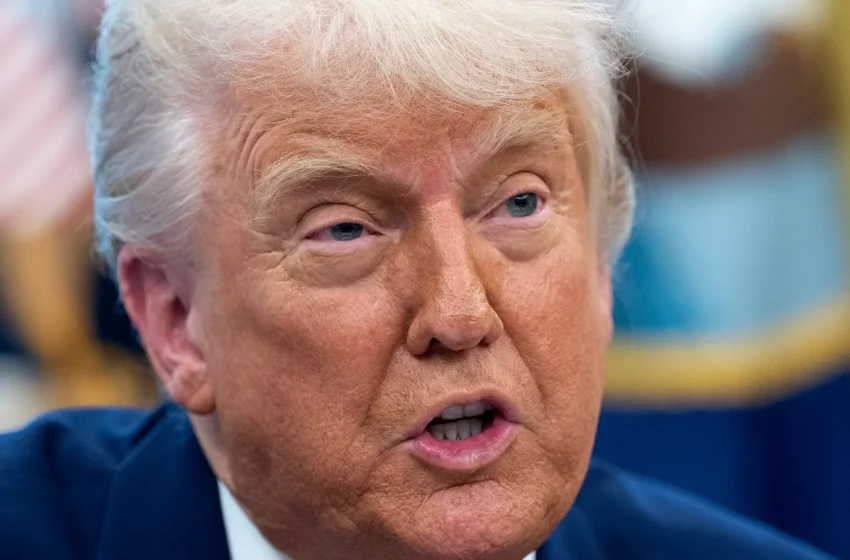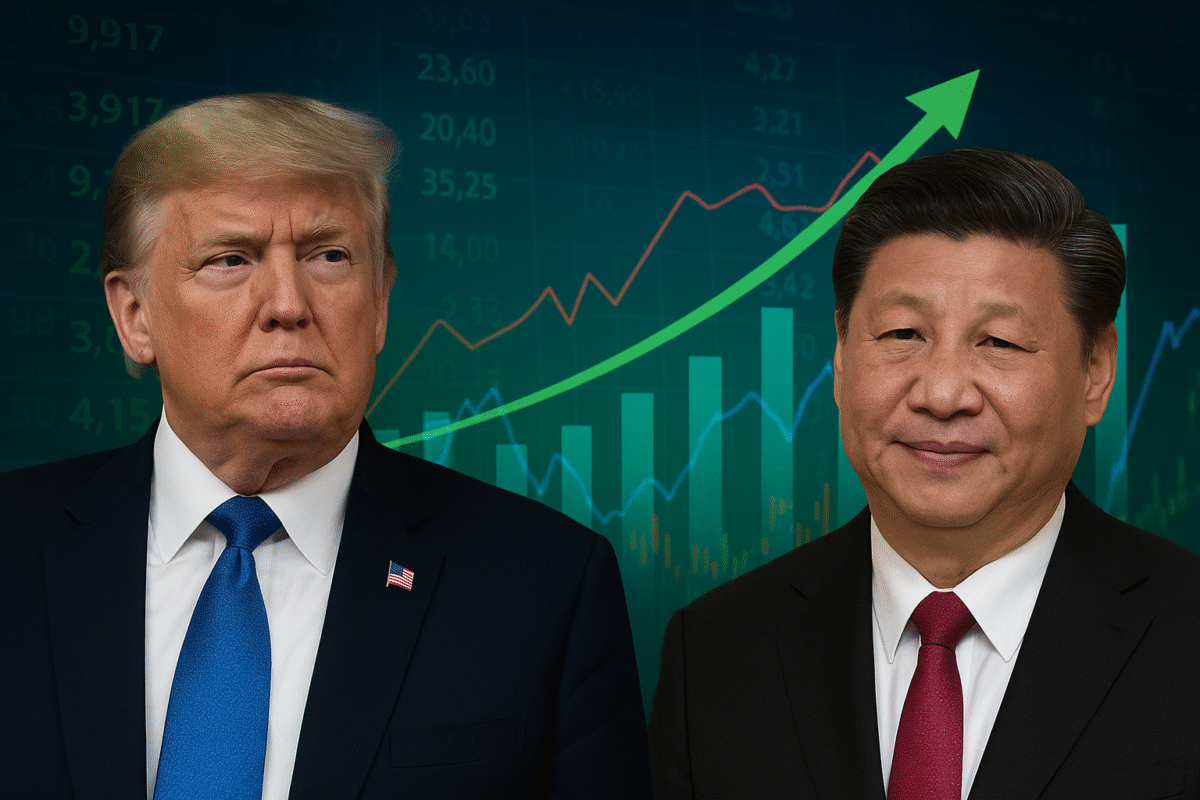Why did the Federal Reserve Cut rates again—and how will it affect you?

Trump’s “good English” comment to Liberia’s president draws criticism over Western perceptions of Africa
The U.S. Federal Reserve on Wednesday approved a widely expected interest rate cut, lowering its benchmark lending rate by 25 basis points to a range of 4.00%–4.25%. The move, backed by a strong majority of the Federal Open Market Committee (FOMC), reflects growing unease about the nation’s cooling labor market even as inflationary pressures persist.
In an 11-1 vote, the Fed opted for a quarter-point reduction, with newly appointed Governor Stephen Miran casting the lone dissent in favor of a deeper half-point cut. The decision was notable for its relative unity, as some policymakers had been expected to push back more forcefully against easing. Governors Michelle Bowman and Christopher Waller, both of whom had been closely watched for signs of dissent, supported the modest reduction.
Balancing Inflation and Employment
The Fed’s post-meeting statement acknowledged that economic growth has “moderated” while warning that job creation has slowed significantly. Inflation, meanwhile, “remains somewhat elevated,” highlighting the delicate balance between the central bank’s dual mandate of price stability and maximum employment.
“The downside risks to employment appear to have risen,” Chair Jerome Powell said at a press conference following the decision. He described the cut as part of a “risk management” strategy designed to keep policy in a neutral zone, rather than a direct response to an imminent downturn.
Markets React Cautiously
Financial markets responded with caution. Stocks swung between gains and losses as investors weighed Powell’s remarks, while Treasury yields moved unevenly—falling on shorter-term bonds but edging higher on longer maturities.
Analysts, however, interpreted the Fed’s decision as more than just risk management. “This isn’t a symbolic move. It’s the Fed steering the economy away from potential turbulence,” said Dan North, chief economist at Allianz Trade North America.
Roadmap for More Cuts
The Fed’s updated projections—commonly referred to as the “dot plot”—suggest at least two more rate cuts are likely before the end of 2025. While opinions within the committee vary, a majority appear to support reductions at both the October and December meetings.
“A majority of the FOMC is now targeting two further cuts this year, indicating that the doves on the committee are in control,” said Simon Dangoor, head of fixed income macro strategies at Goldman Sachs Asset Management.
Projections for the longer term suggest a slower pace of easing, with one additional cut penciled in for 2026 and another in 2027 as the Fed gradually approaches a neutral rate of about 3%.
Political Tensions Loom
The latest policy decision comes against a backdrop of heightened political tension. Former President Donald Trump, who appointed several current Fed officials, has repeatedly pressured the central bank to cut rates more aggressively, citing the weak housing market and rising government debt costs. Miran, Trump’s latest appointee, has echoed those calls.
The Fed also faces internal and external political drama. Earlier this week, a court ruled against Trump’s attempt to remove Governor Lisa Cook, a Biden-era appointee, amid allegations of mortgage fraud—claims she denies. Cook voted with the majority for Wednesday’s quarter-point cut.
Labor Market Signals Weakness
Despite resilient consumer spending and steady overall growth, the labor market remains a growing source of anxiety. The unemployment rate climbed to 4.3% in August, the highest since late 2021. Additionally, the Bureau of Labor Statistics recently revised prior employment figures downward, revealing nearly one million fewer jobs were created in the year ending March 2025 than previously reported.
With Powell’s term set to expire in May 2026, speculation is also building around potential successors, with Waller frequently mentioned as a leading candidate. His support for easing now could bolster his standing in that conversation.
Outlook
For now, the Fed appears committed to a gradual but steady easing path. Policymakers insist future moves will depend on the trajectory of both inflation and employment, but the prevailing message is clear: the central bank is leaning toward supporting a softer labor market, even if it means tolerating inflation above target levels for longer.
FAQs
Q1: Why did the Federal Reserve cut rates in September 2025?
The Fed reduced its benchmark rate by 0.25% to address signs of slowing job growth, while acknowledging that inflation remains elevated. The move was described as “risk management” to balance economic stability.
Q2: How many more rate cuts are expected in 2025?
The Fed’s dot plot projections suggest at least two additional cuts this year, likely in October and December, though the pace will depend on economic data.
Q3: Who opposed the September 2025 rate cut?
Governor Stephen Miran was the lone dissenter, favoring a larger 0.50% cut. Other policymakers, including Michelle Bowman and Christopher Waller, supported the smaller reduction.
Q4: How has the labor market influenced the Fed’s decision?
The unemployment rate rose to 4.3% in August—the highest since 2021—and recent revisions showed nearly one million fewer jobs created than previously reported, pushing the Fed toward a more accommodative stance.
Q5: What role does politics play in the Fed’s decision-making?
While the Fed maintains independence, political pressure looms. Former President Donald Trump has called for deeper cuts, and the appointment of Miran, a known Trump ally, has fueled debates about the central bank’s autonomy.
Q6: How did financial markets react to the Fed’s move?
Markets were mixed—stocks swung between gains and losses, while Treasury yields fell on short-term bonds but rose on longer maturities.
Q7: What is Jerome Powell’s outlook on monetary policy?
Powell signaled that monetary policy is now in a “neutral” zone, emphasizing flexibility. He stressed that future moves will depend on labor market performance and inflation trends.
What the Fed’s Rate Cut Means for You
The Federal Reserve just lowered interest rates by a quarter of a percentage point. That might sound technical, but here’s how it can affect your daily life in simple terms:
1. Loans May Get Cheaper
If you have a credit card, car loan, or personal loan, you could soon pay slightly less in interest. Banks usually pass Fed cuts down to consumers, so borrowing becomes a bit easier.
2. Mortgage Rates Could Fall
Homebuyers may benefit as mortgage rates dip. If you already have a fixed-rate mortgage, nothing changes. But if you’re shopping for a new home or have an adjustable-rate loan, your payments might shrink.
3. Savings Accounts Might Pay You Less
On the flip side, interest you earn on savings accounts, CDs, or money market funds may drop. That means your bank balance grows a little slower.
4. Stock Market Volatility
Investors often cheer lower rates because it makes borrowing cheaper for businesses. But the Fed’s concerns about jobs may spook markets, meaning your retirement or investment accounts could swing up and down.
5. Jobs Are a Big Factor
The main reason the Fed cut rates is because hiring is slowing and unemployment is rising. If the economy doesn’t pick up, job seekers could find it harder to land work. The rate cut is meant to keep companies hiring.
6. Inflation Still Matters
Prices for groceries, gas, and rent are still higher than normal. Lower rates don’t make inflation disappear, but the Fed hopes to balance things so people don’t lose jobs while costs stay manageable.


